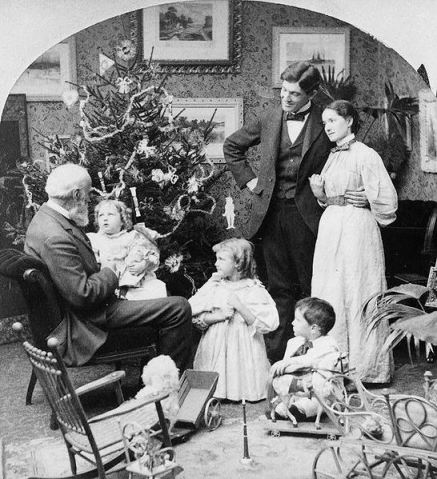I will never forget how excited I would get about Christmas. The funny thing is that this enthusiasm would often begin months before December. Sometime around the part of the year when the weather would change, my thoughts would begin to drift to that magical day. I would begin to picture the gifts and all of the pleasant things that get tied to the celebration of Christmas. On one hand, some might want to dismiss this experience. After all, I was focused on the gifts. Although my motives were mixed, I would still say their was something in my desires that trained me in the spiritual life. Expectation and desire are important preludes to holiness.
I have mentioned in several chapters how family prayer must be centered on inviting heaven into our families. Often, parents can use concrete and tangible things such as presents and delicious food to help children to experience love in ways that strengthen the faith. Your children will find it difficult to believe in an invisible Father who loves them and answers their prayers if they do not experience something similar to that love in their families. By creating a posture of expectation within your children, especially when this aligns with the liturgical year, you help them to have great desires in their spiritual life.
The key is to use honey to help them swallow the medicine. The idea of sacrifice and taking up one’s cross does not come easy to children, even less sometimes for adults. The reality is that you must help prepare the way for sacrifice by first giving them sweetness and support. The two major liturgical celebrations of the year, Christmas and Easter, are marked by periods of penance. Advent and Lent are meant to help dispose us to enter fully into the two most important celebrations of our faith. In a certain sense, these seasons help to build in us expectation.
In particular, the renunciation and fasting of Lent help us to “hunger” and “thirst” for the good things that the Lord wants to give us. Our physical hunger becomes a preparation and aid to the more important spiritual hunger for God which is necessary for growth. Although fasting is generally not recommended for children, that does not mean that you should not help to build up your children’s expectations and excitement about the seasons. Presents at Christmas time is the classic example of this, but you should consider building up a series of family rituals that give your children a sense of the liturgical year.
These two seasons are just a few times when your family prayer life should seek to anticipate and cooperate with the yearly liturgical cycle. I would recommend beginning with these two major liturgical celebrations and work your way out from there. Then you can look towards other interesting celebrations such as Pentecost and Corpus Christi. The Church provides a vast variety of possibilities in this regard. The key is not so much to do as much as possible, but rather to focus on what gives meaning to your family.
Discover elements of the liturgical year that resonate with you, and then share that with your children in fun and interesting ways. This means that you should dedicate some time to learning more about the different celebrations. In this way, your desire to enter into the mystery will be the source of inspiration by which you draw your children into the boundless possibilities of worship.
Reflection Questions
-
What is your favorite Liturgical celebration? Why?
-
What is your children’s favorite Liturgical celebration? Why?
-
Pick one celebration that you do not know a lot about, but want to learn more about. This week, spend some time researching it and bring back to the group what you discover.














No Comment